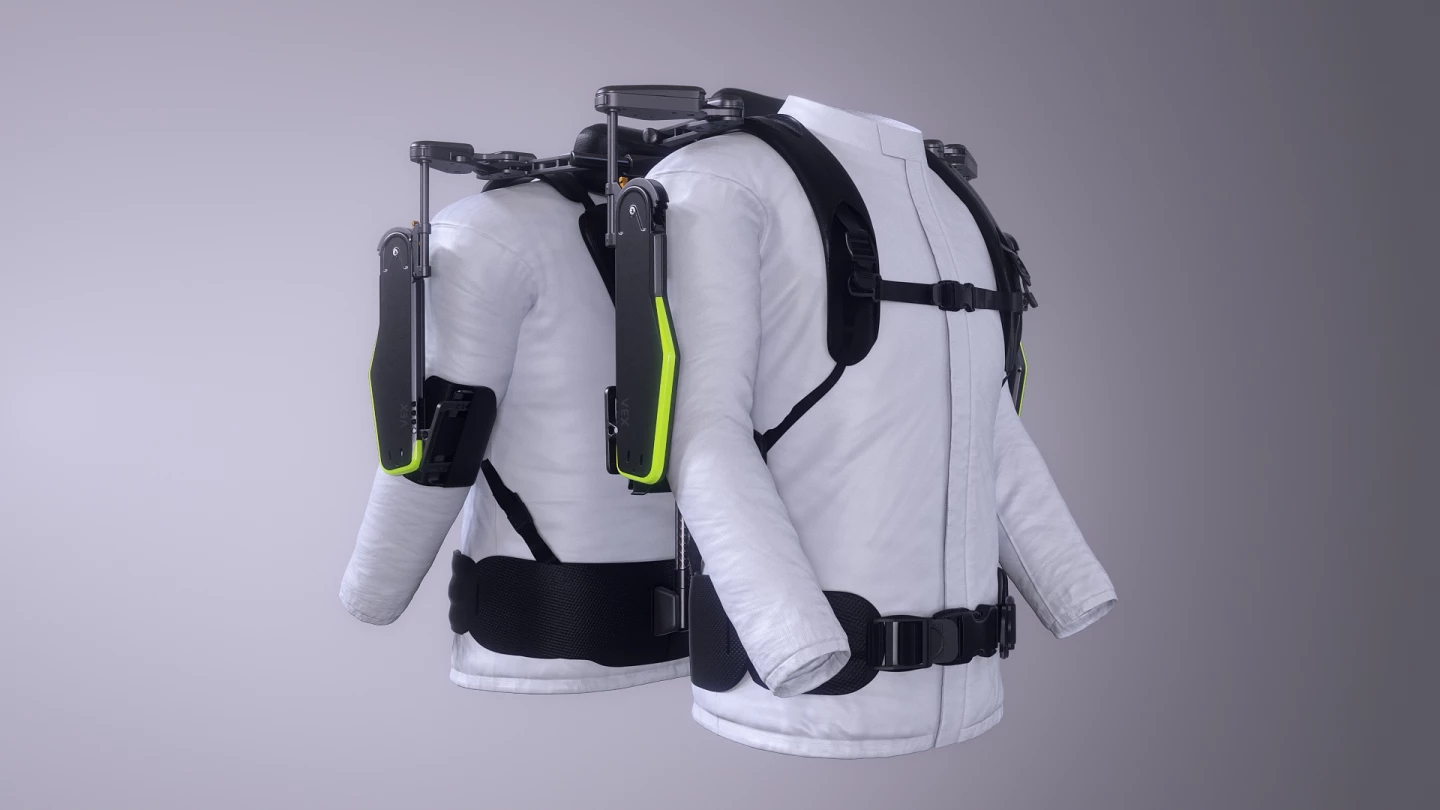While automated technologies have certainly lightened the load in car factories around the world, hard labor and long hours on the part of human workers is still a big part of the manufacturing mix. Hyundai has been developing different types of assistive exoskeletons to give its factory workers a helping hand, the latest of which focuses on those tending to overhead tasks.
You could think of Hyundai’s exoskeletons as robots that people can wear to provide support for vital joints and body parts that can be prone to overuse and injury. Its Chairless Exoskeleton, for example, is designed to protect the wearer’s knees, while the Vest Exoskeleton (VEX) is made to reduce pressures on the neck and back.
Today’s announcement is a follow-up to the trial of these two exoskeletons in North America last year, which Hyundai describes as widely successful. The newly upgraded VEX is promised to be a great deal lighter, with Hyundai claiming its total weight of 2.5 kg (5.5 lb) is up to 42 percent lighter than competing products.

You could think of Hyundai’s exoskeletons as robots that people can wear
Hyundai says this low weight is due to the absence of a battery, with the VEX instead relying on a spring-based system that offers six degrees of force assistance and still allows for a full range of motion. It is worn like a backpack with Hyundai workers slipping their arms through the shoulder straps to take on overhead tasks like fitting brake tubes and exhausts from the underside of the vehicles.
“VEX gives workers greater load support, mobility, and adaptability when operating in overhead environments,” stated DongJin Hyun, head of Robotics team of Hyundai Motor Group. “Workers will also appreciate how light VEX is to wear and work with.”
Hyundai says it is weighing up a worldwide rollout of VEX, and expects it to go into commercial production by year’s end. You can check out the promo video below.
Source: Hyundai








